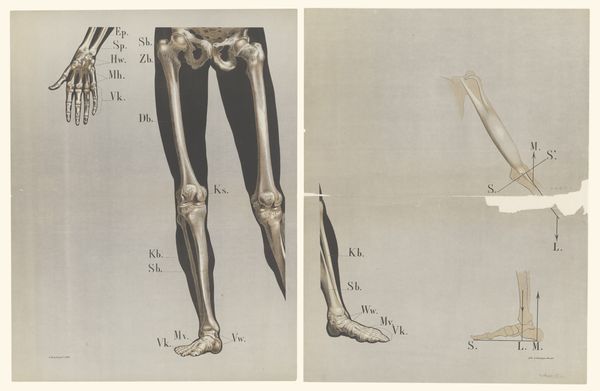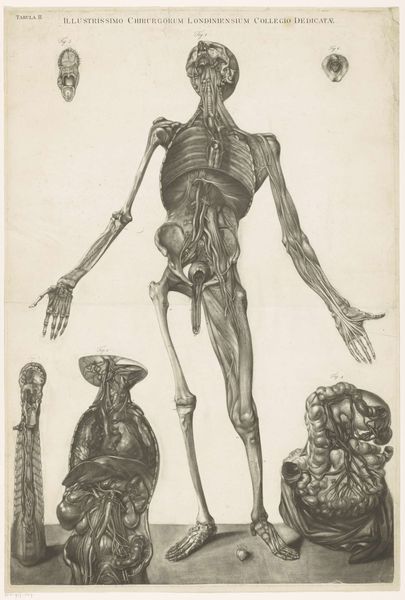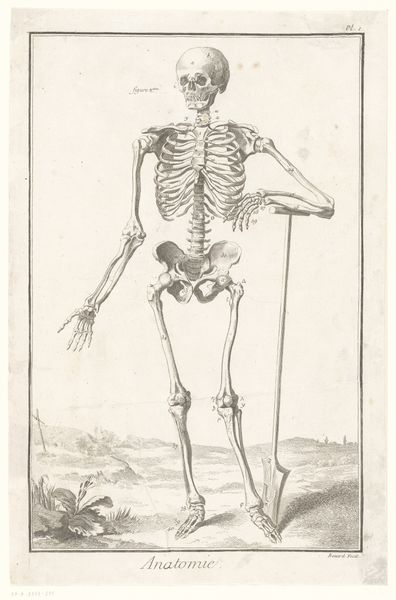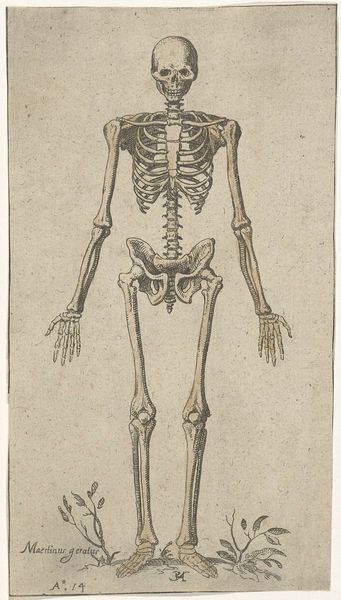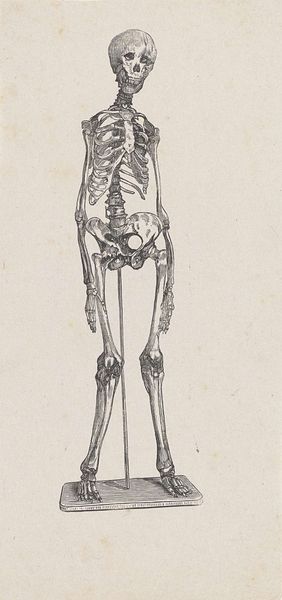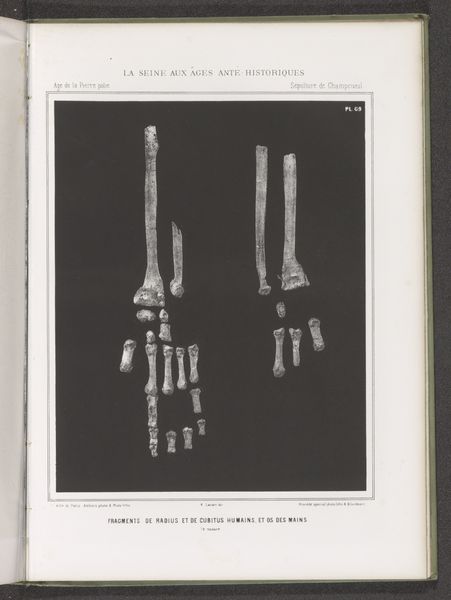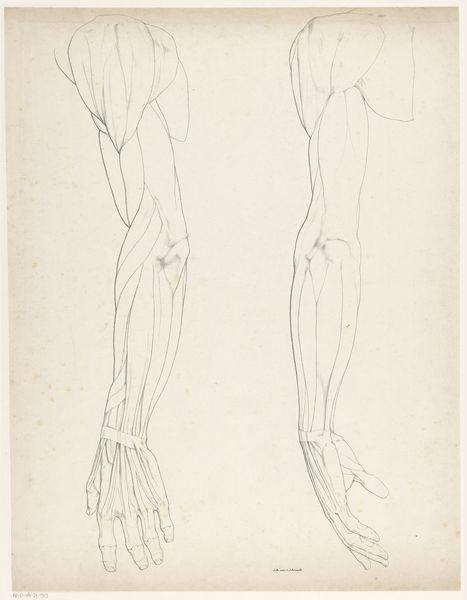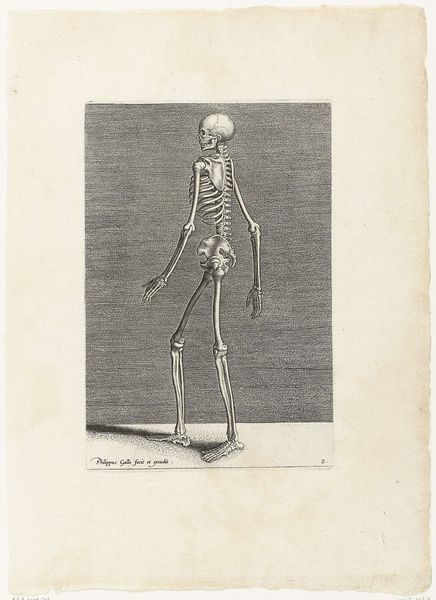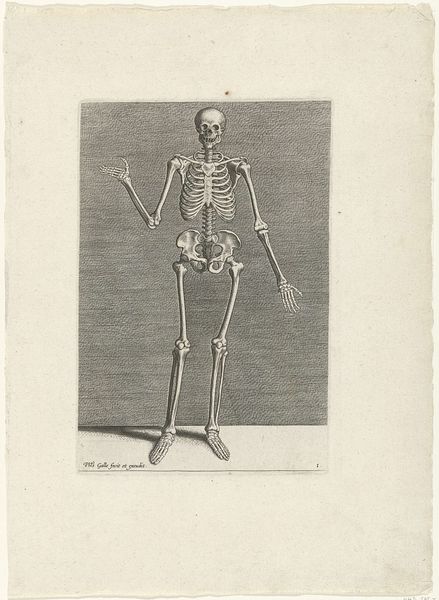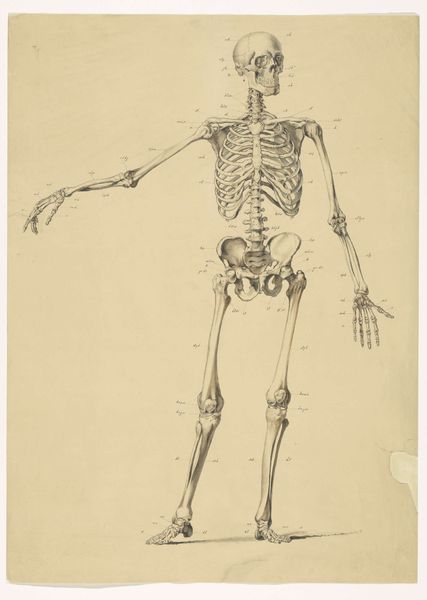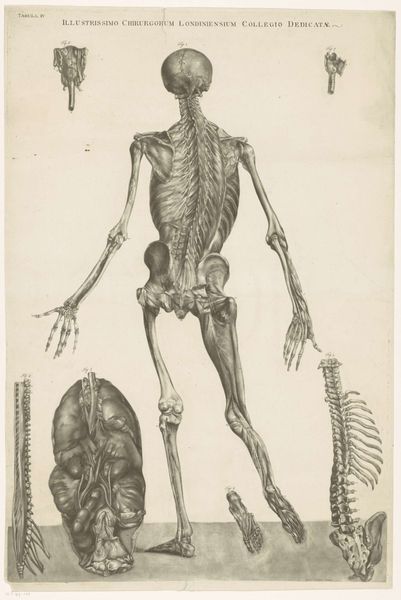
drawing, print, graphite
#
drawing
# print
#
pencil sketch
#
figuration
#
pencil drawing
#
graphite
#
history-painting
#
academic-art
#
realism
Dimensions: height 654 mm, width 504 mm
Copyright: Rijks Museum: Open Domain
Curator: This fascinating drawing is entitled "Anatomie van de botten in de hand, benen en voeten" and it comes to us from 1869. The artist is Sybolt Berghuis, working primarily in graphite to bring the bones of the hand, leg and foot to life on paper. Editor: Stark! My first impression is its disquieting clarity. The rendering is meticulous, almost cold in its scientific precision. There's no flesh, just the silent architecture of bone. Curator: Absolutely, the symbolism of the skeletal system is often associated with mortality, isn't it? But here, I also see it as a representation of essential structure, the enduring framework upon which life is built. In art of this period, depicting human anatomy became important not only for science, but as a form of representing mankind in a classical sense. It recalls Vitruvian ideals and links medicine to enduring classical traditions. Editor: That's interesting. Viewing it from my angle, these drawings also represent the institutional control over knowledge during the late 19th century. Medical illustrations, like this one, played a role in shaping and disseminating scientific knowledge. They reinforced the power dynamics between doctors, patients, and the public understanding of the human body. Curator: I see what you mean. It makes you wonder how such imagery affects cultural perceptions of the body and illness, then and now. How the perceived "flaws" may affect not only medical, but social understanding of what is acceptable within parameters of functionality or appearance. Editor: Exactly. The clinical gaze, perpetuated through such visual representations, becomes embedded within cultural discourse. It is more than art, and contributes to a socio-political construction. Curator: Still, Berghuis's realism is remarkable. You can trace every articulation, every tiny irregularity. The beauty is there. Editor: True, and ultimately this kind of scientific rigor advanced art. Thank you, this has offered a lot of perspectives. Curator: Likewise, an engaging reminder of art's ability to embody, not only objective truth but to serve as an object of study for medicine and history, it seems.
Comments
No comments
Be the first to comment and join the conversation on the ultimate creative platform.
